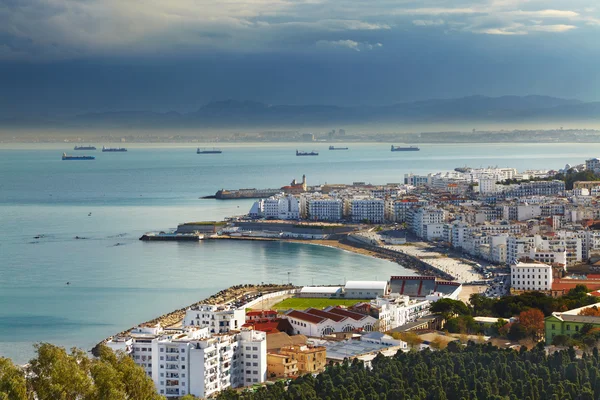Are you considering investing in Kenya’s hotel and hospitality business?
For decades, Kenya has stood as the gateway to East Africa—a convergence point for global diplomacy, commerce, and tourism. While its safari lodges and pristine beaches remain iconic, the most compelling current investment narrative lies in the high-yield, stable-demand sector of Meetings, Incentives, Conferences, and Exhibitions (MICE). Kenya’s recognized status as a regional business and conference hub makes the development of specialized MICE-focused hotels a top-tier opportunity for African and international capital.
Nairobi, in particular, was previously named Africa’s Leading Meetings and Conference Destination by the World Travel Awards and currently ranks highly in Africa for hosting international association conferences. This established positioning, coupled with strong government support through initiatives like Vision 2030, sets the stage for exponential sector growth.
- Hospitality Business Opportunities in Kenya
- 2. Where to start a hotel business in Kenya? Nairobi vs. The Coast
- 3. How much does it cost to start a 4-Star Hotel Business in Kenya
- 4. Critical Success Factors for Investors
- Conclusion
Hospitality Business Opportunities in Kenya
MICE is distinct from traditional leisure tourism because it generates higher yields and provides year-round activity, offering stability that counteracts the seasonality often faced by pure leisure properties. Business travelers attending conferences don’t just occupy rooms; they actively scout for partners, joint ventures, and investment opportunities, increasing the total economic impact per delegate.
The demand drivers for MICE in Kenya are robust:
- Regional Hub Status: Nairobi acts as East Africa’s primary economic and transit hub, attracting robust corporate, government, and NGO demand.
- Established Infrastructure: World-class convention facilities, most notably the Kenyatta International Convention Centre (KICC), provide the foundation for large-scale global events.
- Bleisure Trend: Kenya offers a perfect blend of business and leisure (or “bleisure”), allowing conference attendees to extend their stay for a safari in the Maasai Mara or a retreat on the Coast.
2. Where to start a hotel business in Kenya? Nairobi vs. The Coast
The strategic investment approach in MICE hospitality should leverage the complementary strengths of Kenya’s two primary regions.
A. Nairobi Metropolitan Area🏙️
Nairobi is the undisputed leader, accounting for a high volume of room capacity and boasting superior performance metrics compared to other regions.
| Region | Sample Occupancy Rate (2016 Data) | Sample Average Daily Rate (ADR) (USD) | Sample TRevPAR (USD) |
| Nairobi | 51.0% | $229 | $149 |
| Coast | 29.0% | $152 | $57 |
Source: Based on historical data from the Kenya Hospitality Sector Regional Performance analysis.
Nairobi Investment Opportunity Niche:
While Nairobi has recently experienced a significant supply increase, leading to heightened competition, the opportunity is not in general capacity but in specialized, large-scale facilities.
- The Critical Gap: Experts identify a critical need for a centrally located private conference hotel with a 1,000-plus delegate plenary hall and expo floor in secure, accessible districts like Westlands or Gigiri. Existing top-tier hotels like Radisson Blu, Mövenpick, and JW Marriott have expanded capacity, but a major, privately-led “mega-MICE” venue remains a high-return investment target.
- The Profit Driver: High TRevPAR ($149 based on 2016 data) shows that delegates spend significantly on food, beverage, and auxiliary services beyond the room rate, making MICE delegates exceptionally high-value guests.
B. The Kenya Coast 🏖️
The Kenya Coast—particularly Mombasa and Diani—provides the ideal setting for incentive travel, executive retreats, and larger resort-style conferences. This region targets companies seeking a blend of high-level meetings and team-building in a relaxed, stunning environment.
Coast Investment Opportunity Niche:
The investment sweet spot here is in integrated resort-convention centers that cater to both international and domestic markets for large-scale corporate bookings.
- Pioneering Examples: Resorts like Vipingo Ridge and Pride Inn Paradise are already positioning themselves as world-class, eco-conscious destinations for business events and have successfully hosted major gatherings like the Kilifi County International Investment Conference.
- The Unique Selling Proposition (USP): Investors should focus on properties that seamlessly integrate state-of-the-art conference halls with leisure amenities like golf courses, spas, and private beach clubs, maximizing the Work, Stay, and Play potential.
3. How much does it cost to start a 4-Star Hotel Business in Kenya
Building a successful MICE property requires significant capital expenditure (CAPEX) due to the necessity of specialized technology, large common areas, and high-quality build standards.
Investment Profile: 150-Room, 4-Star Conference Hotel (Nairobi)
| Component | Cost Rationale (High-Level Estimate) | Estimated CAPEX (USD) |
| Land Acquisition (Prime Nairobi Location) | Varies significantly by location (Westlands, Kilimani) and size required for parking and convention wings. | $5,000,000 – $10,000,000 |
| Construction & Fit-out (150 Keys) | Assumes a construction cost of $150,000 per key for a high-quality, 4-star standard, totaling $22.5M. | $20,000,000 – $30,000,000 |
| Specialized MICE Facilities | Includes a 500-delegate pillarless plenary hall, 5-8 breakout rooms, business centers, advanced AV/IT systems, and fiber connectivity. | $5,000,000 – $8,000,000 |
| Pre-Opening Costs & Working Capital | Licensing, branding, staff training, initial inventory, and working capital buffer. | $2,000,000 – $3,000,000 |
| Total Estimated CAPEX | $32,000,000 – $51,000,000+ | |
| Estimated KES Equivalent (Approx. 130 KES/USD) | KES 4.2 Billion – KES 6.6 Billion+ |
Note: This is a high-level mock account. Actual costs will depend on design, brand standards, and specific land valuations.
Profitability Analysis & Revenue Streams
The core profitability of a MICE hotel stems from its diversified revenue streams and high average expenditure per event:
- MICE Packages (Anchor Revenue): Conference packages are the primary driver, offering predictable revenue.
- Day Delegate Rate (DDR): Five-star hotels in Nairobi typically charge $45–$50 (KES 5,805 – KES 6,450) per person for all-inclusive day packages (venue hire, meals, and services).
- Event Value: A single 200-attendee, multi-day conference can generate an estimated revenue of $70,000 – $90,000 (KES 9 Million – KES 11.6 Million) for the event organizer (and a large portion of this accrues to the hotel/venue).
- Rooms Revenue: MICE events drive high room occupancy, often negotiated under corporate rates, ensuring stable yield over unpredictable rack rates.
- Ancillary Revenue: Upscale properties benefit from premium add-ons:
- Executive Boardrooms: Rental costs range from KES 10,000 to KES 60,000 per day.
- Luxury Services: Spas, fine dining restaurants, and executive lounge access boost Total Revenue Per Available Room (TRevPAR).
4. Critical Success Factors for Investors
To unlock superior returns, investment must address three key areas:
A. Technology and Infrastructure
The MICE segment is driven by tech-savvy demand, requiring flawless execution of hybrid and virtual events.
- Essential Investment: State-of-the-art AV systems, high-speed and redundant Wi-Fi connectivity, and virtual meeting capabilities are no longer luxuries; they are essentials. Investors should seek opportunities to link local technology innovators with hotel development to create affordable, tailored solutions (the “Silicon Savannah” advantage).
- Logistics: Proximity to Jomo Kenyatta International Airport (JKIA) and smooth transfers (leveraging the Nairobi Expressway) are vital for international delegates.
B. Sustainability and Eco-Consciousness 🌱
Global corporate entities are increasingly prioritizing sustainable tourism practices.
- Competitive Edge: Hotels integrating eco-friendly practices—such as solar energy usage, waste reduction, and sustainable sourcing—attract environmentally conscious corporate clients and benefit from potential government tax incentives for green projects. Aligning with these trends is crucial for attracting high-profile international conferences.
C. Policy and Regulatory Navigation
While the government supports the sector, investors must navigate existing challenges to maximize returns.
- Advocacy for Incentives: The private sector needs to continue advocating for tax incentives and strategic allocation of land to expand convention capacity dramatically.
- Talent Development: Investment in training programs that specifically focus on conference and event management is critical, as many current hospitality programs overlook this specialized MICE talent need.
Conclusion
Kenya’s MICE sector is not merely recovering; it is evolving into a sophisticated, high-value industry. The strategic investor understands that the future of Kenyan hospitality is centered on purpose-built, technologically advanced, and ecologically responsible convention facilities.
The opportunity is clear: target the high-capacity gap in Nairobi with a flagship MICE center, or capitalize on the growing “bleisure” trend by developing all-inclusive conference resorts on the Coast. By focusing investment on specialized MICE infrastructure and embracing sustainability, entrepreneurs and investors can help Kenya reclaim and solidify its position as East Africa’s indispensable hub for trade, ideas, and innovation.



